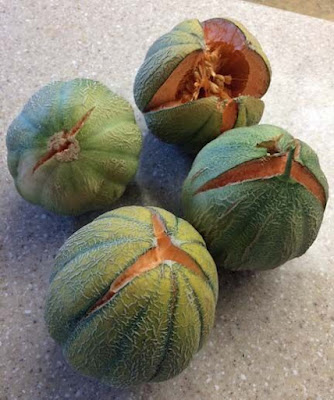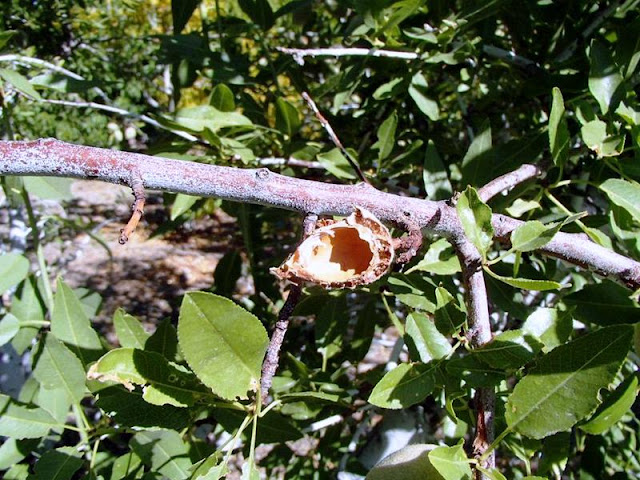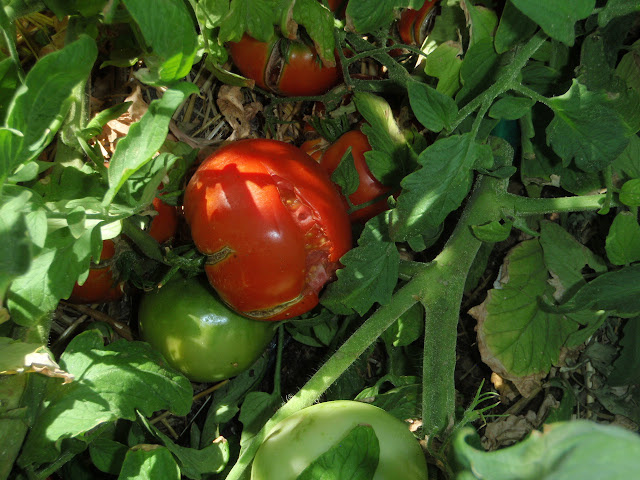Q. What causes cantaloupe melons to split before they slip the vine?
 |
| Melons splitting as they are ripening |
A.
Like any fruit, when the melon nears maturity and the outside rind hardens and
irrigation water is “pumped” into fruit, they split. This can happen with
melons, cherries, peaches, tomatoes, cucumbers, and other botanical fruits. Fruit
with a thin skin like cherries are more susceptible to splitting after a rain
than thicker “skinned” melons. Fruit splitting can happen soon after an
irrigation when the temperatures have created a lot of stress or right after a
rain.
 |
| Peach splitting on the tree |
Rainwater enters the fruit through the “skin”
or rind and causes it to swell and burst. It is due to an “osmotic effect” and
susceptible fruits will split when nearly ripe and their sugar content is
peaking. Nearing maturity is the time these fruits are full of sugar and primed
for rainfall and the “osmotic effect”. “Nearly ripe” is a dangerous time for a
combination of fruit and rain.
 |
| Orange split |
What to do? First of all, note the
variety. Some varieties are more susceptible to splitting while others are not.
Secondly, harvest climacteric fruit (those fruit that continue to ripen after
they are picked) early. before a rain and let them ripen protected after
harvest. Unfortunately, melons are non-climacteric and do not ripen further
after picking. Protect the fruit from rainwater and apply a surface mulch
during hot weather.




















